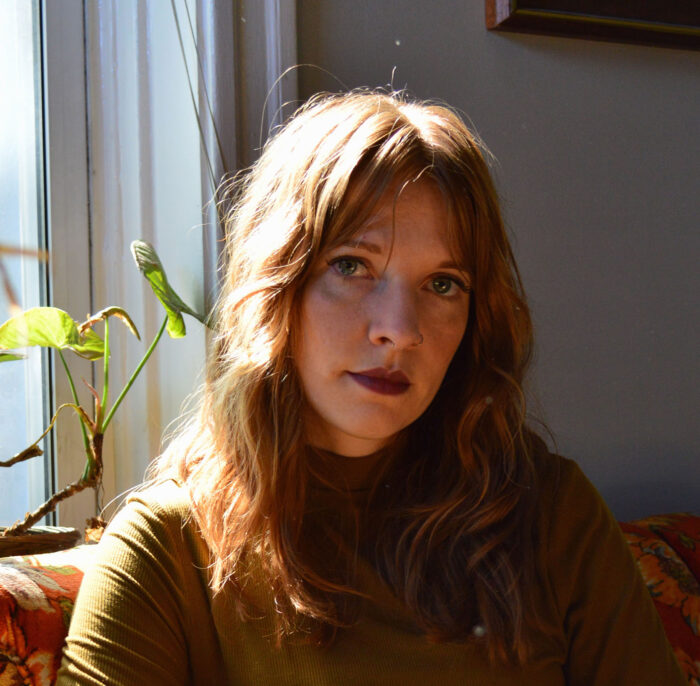
From receiving a BFA in art (with concentrations in both ceramics and photography) to now working as an art therapist, Kristin Yarnell has found her passion–with the unexpected help and inspiration from hometown friends and an english class.
“I applied to MSU as a ceramics major after falling in love with clay in high school,” explains Kristin, “but [I was] extremely unaware of how to apply that to a career I was interested in pursuing.” She heard about art therapy while in her earlier years at MSU but didn’t see it as a career. It wasn’t until Kristin had to give a presentation on her major for an english class that she seriously considered pursuing art therapy, since she didn’t have a definite plan for her art degree.
Kristin describes art therapy as a triangle of communication. The counselor and client are two sides, while the therapeutic art a client creates completes the triangle. “The art [they make] can aid in communication what words can’t,” she says.
By her senior year, Kristin still hadn’t solidified what she wanted to pursue. “Teaching and doing freelance art wasn’t where my heart was,” she reflects. Over winter break before her final semester, she met two friends “who were artists and in recovery from drug and alcohol addiction.” Witnessing their artwork, created from experiences of use, recovery, relapse, and everything in between gave Kristin “the big push to pursue art therapy as a career,” she says.
“Seeing [that] level of vulnerability in art-making inspired me,” shares Kristin, “At that point I decided I wanted to get my master’s [degree] in art therapy, but only if I could make art with recovering addicts and alcoholics.” Observing the creation of those artworks as a way of expression and healing held much power and fueled her passions of studying art therapy. “Their art was so profound and raw,” Kristin shares, “even if it wasn’t what I was taught ‘good art’ should look like.”
Although art therapy is done in many ways, Kristin is currently a substance use counselor and art therapist. She works at Serenity House Counseling services, a non-profit focusing on substance use and offering multiple options for treatment, involving halfway houses, individual and group therapy sessions, adolescent therapy, and other recovery programs. A day-in-the-life of an art therapist involves much more than just counseling. Depending on the day, Kristin might be completing assessments and paperwork, writing treatment plans, applying for grants, ordering art supplies, assisting clients with life skills (budgeting, paying rent, resumes, etc.), and much, much more.
The stories and experiences of her clients invokes continued inspiration within Kristin. “In the recovery community, it’s very important for clients to share their stories to help other people in early recovery as a motivator,” she explains, “Hearing people share their stories gives direct insight into what worked [and what didn’t] for that person.” The information gathered through personal anecdotes aids Kristin in taking an individualistic and intentional approach when focusing on each client. As a working mental health professional, Kristin cites the importance of art therapists–and therapists of all kinds–in today’s world. “I think now more than ever we need professionals in the mental health field,” she states, “This pandemic has stirred up various mental health issues for individuals in addition to their already existing mental health.” In order to further the healing process, Kristin believes that therapy and art-making are “crucial to healing and recovery.”
For those also believing in the impact of therapy and art-making who wish to pursue similar goals, Kristin recommends seeking a dual degree in both counseling and art therapy. “[You’ll] be more marketable to employers [since] art therapy positions alone are less common than counseling positions,” she explains. Obtaining licensing for counseling and therapy is also something important to consider when delving deeper into the area of study, as well as looking at graduate schools that align with your desired opportunities–some schools are more art based, while some are more clinically based.
“Please don’t let being ‘bad’ at art stop you from becoming an art therapist,” Kristin encourages, “Art therapy does not mean you have to be ‘good’ at making art!”
***
Kristin would like to offer her information to anyone who has questions about art therapy, counseling, addiction, etc. You can reach her at k.yarnell@live.com. “I’d be happy to shed light on what I’m able to, and if I can’t, then I’d be happy to point you in the right direction at least,” she shares.

Leave a Reply